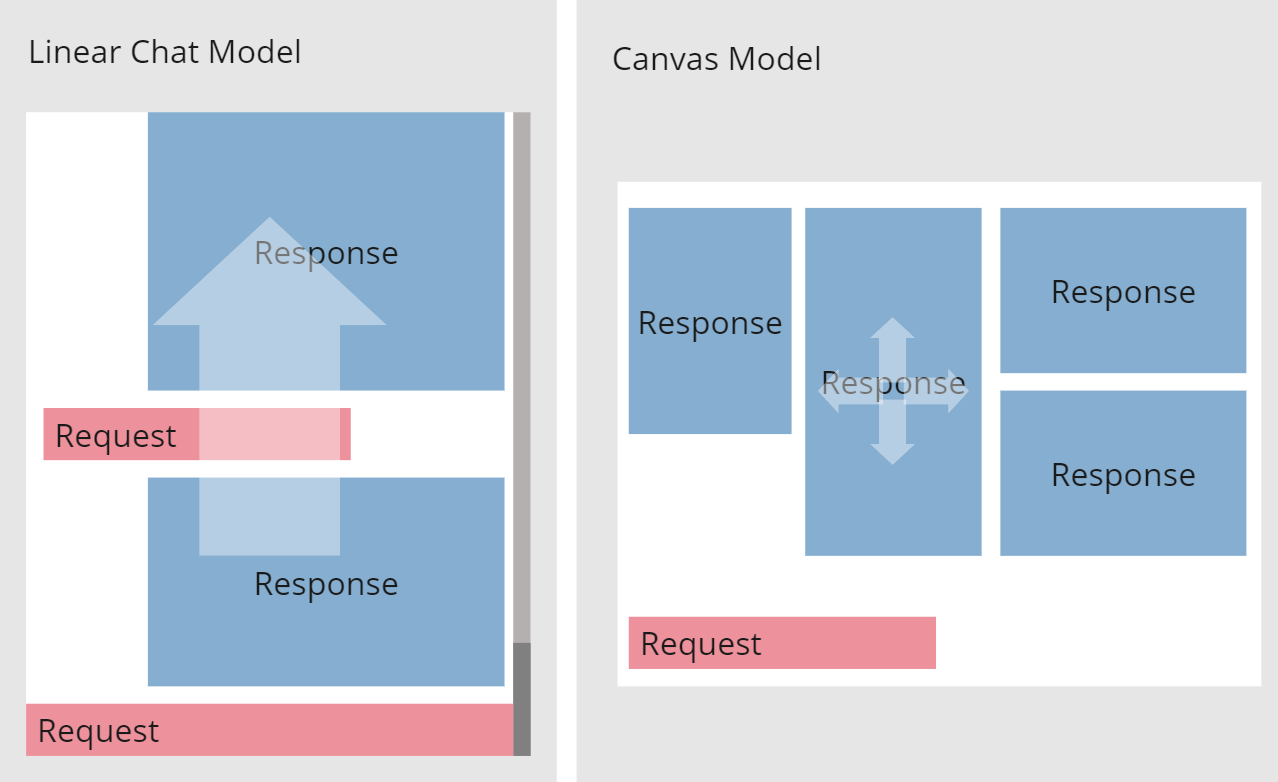Member-only story
PRACTICAL DESIGN INNOVATION
Generative AI canvases versus conversations
Understanding how AI canvases provide flexibility and growth for users’ ideas.

Canvas experiences are a new expression of the Generative AI experience. Companies must decide whether they should become part of their design system and become an avenue to being the user’s primary experience.

Canvas experiences differ from conversational experiences in that, instead of new requests pushing information up the page, responses are broken up into cards with differently formatted information, such as lists, tables, images, maps, etc., that the user can rearrange. This keeps the information the user cares about in front of the user instead of older but possibly relevant information scrolling away. This allows them to pursue information from specific cards and rearrange it based on their thought process.
Primary Experience
A primary interface is the experience a user/company prefers to accomplish work.
An example of this can be found with users whose job is manipulating data. These users will often choose Excel, even if there are SaaS applications that do parts of the job better because it provides more flexibility in accomplishing tasks and a broader base of help. Excel is the role’s primary interface for their activities.
If a company wants a system to be the primary interface, its platform’s experience needs to maximize usage and data capture to create an experience that can fulfill the user’s goals across a broad spectrum of use cases.
Generative AI conversational experiences have aspects needed to become the primary interface — they provide flexibility like Excel, access to information outside an app or enterprise platform’s ecosystem, and can respond to the user’s needs in more ways. Additionally, they answer questions based on the user’s context instead of forcing the user through a fixed process and result of forms, tables, and dashboards. These abilities maximize value and, thus, usage.

